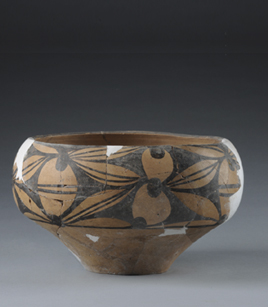Ceramics and Yangshao culture

FILE PHOTO: A painted ceramic bowl of the Miaodigou cultural period
Painted ceramics of the Yangshao culture were first discovered by the Swedish geologist Johan Gunnar Andersson in Yangshao Village, Henan Province, in 1921. Andersson failed to identify the origins of the Yangshao culture due to the prevailing influence of Eurocentrism at that time and the lack of archaeological knowledge: he proposed that the Yangshao culture was introduced from Central Asia. In order to verify his hypothesis, Andersson began to conduct investigations in Gansu, Qinghai and other places. He claimed that there existed no painted pottery dated earlier than the Yangshao ceramics in China, while many prehistoric painted ceramics had been unearthed in Europe and Central Asia at that time.
Since the Yangshao site was the oldest archeological site discovered in China at that time, it became an important task for archaeologists to understand its origins and evolution.
Between 1944 and 1945, renowned Chinese archaeologist Xia Nai discovered that the Qijia culture (about 4000-3900 years ago) appeared later than the Yangshao culture when excavating the Qijiaping site in Gansu, a site previously excavated by Andersson. Archaeological stratigraphic evidence completely overturned Andersson’s view that the prehistoric culture in Qinghai and Gansu was earlier than the Yangshao culture in the Central Plain. In the 1970s, carbon-14 dating of specimens obtained from the Lijiacun site in Shaanxi showed that the site was over 7000 years old, older than the Yangshao culture. Archaeologists finally found cultural relics earlier than the Yangshao culture in China.
Later, archaeologists successively discovered the remains of the Peiligang-Cishan culture and the Laoguantai culture, all dating to more than 8000 years ago, far earlier than the remains of the Yangshao culture. Among them, Laoguantai culture presents the closest relationship with Yangshao culture, and has been regarded as its direct source. In particular, the painted pottery of the Laoguantai culture not only reveals the origin of the painted pottery of the Yangshao culture, but also shaped the style of the later Chinese painted pottery, using red as its primary color.
Edited by REN GUANHONG

 PRINT
PRINT CLOSE
CLOSE